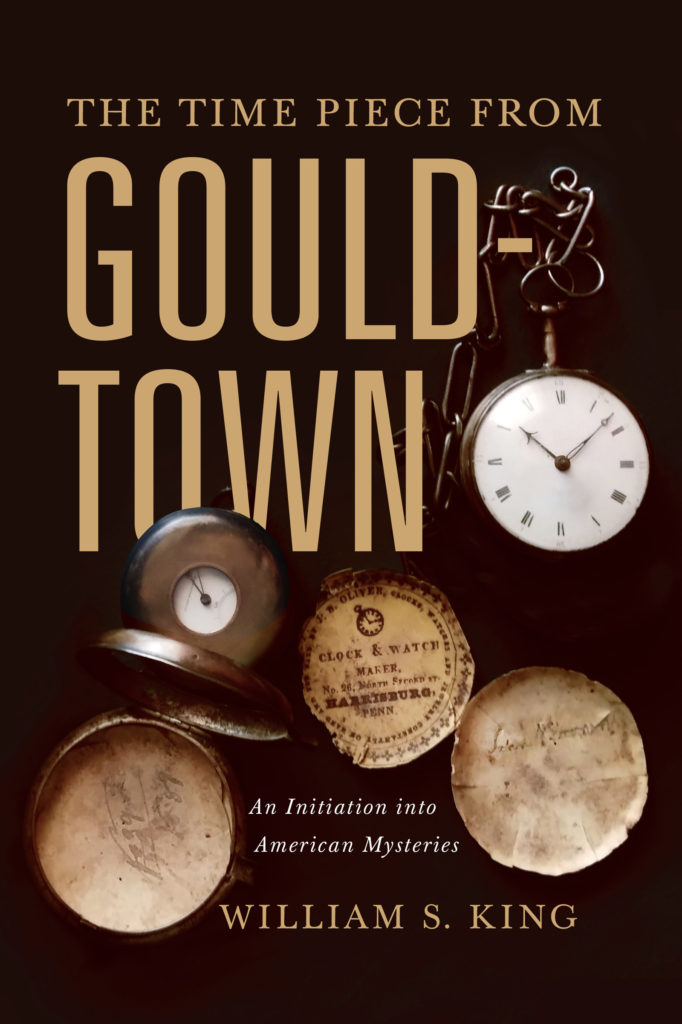

The Timepiece from Gouldtown
An Initiation into American Mysteries
$35.00 Add to Cart Save 25% on every book by joining our Book Club


A mechanism has ceased its functioning. In all probability, the device at first needed only slight modification, then would no longer respond even to these promptings. Tarnished by time, the thing became a historical artifact, a representation, bearing an intriguing inscription and a date: “John Brown, 1839.” Shut away in a chest among other objects of a bygone era, the timepiece is an heirloom of a family from Gouldtown, New Jersey, whose roots in America go back to the seventeenth century. In 1677, John Fenwick, a member of the Society of Friends, founded a colony in west New Jersey offering religious and political tolerance five years before William Penn’s arrival. Fenwick died in 1682 with a considerable estate, but left an unusual stipulation in his will: that his granddaughter Elizabeth should have no share of his property unless she forsake “that Black that hath been the ruin of her.” The man Elizabeth married was a coachman employed by Fenwick, named Gould. They had two children and created a settlement called Gouldtown, now considered the oldest continually inhabited African American community in the United States. How did an item belonging to the legendary abolitionist come into the Gould family’s possession?
Using John Brown’s pocket watch as a departure point, The Timepiece from Gouldtown: An Initiation into American Mysteries by award-winning author William S. King explores both the color line apparent from the founding of America as well as the network of whites and Blacks that fought to end slavery. This network is manifest in the operations of the Underground Railroad, but elements of its scope, capabilities, and intentions are less understood. John Brown’s associate Richard J. Hinton recalled that, “There existed something of an organization to assist fugitives and of resistance to their masters. It was found all along the Lake borders from Syracuse, New York, to Detroit, Michigan. As none but colored men were admitted into direct and active membership with this League of Freedom, it is quite difficult to trace its workings or know how far its ramifications extended.” This “League of Freedom” was called provocatively the “American Mysteries” by delegate George J. Reynolds at the 1858 Convention of Colored Men.
To contextualize this network, King traces encounters and legislation strengthening slavery and segregation, beginning with Gouldtown’s founding, through the Amistad trial, and the 1850 compromises. He then uses the well-documented careers of John Brown and Frederick Douglass to demonstrate the crucial and wide-ranging united efforts of those in whom they confided, including Harriet Tubman, Jermain Wesley Loguen, Martin Delaney, Henry Highland Garnet, and how their work extended beyond the Underground Railroad and the abolitionist movement in general. The book ends with a consideration of the competing biographies of John Brown by W. E. B. DuBois and Oswald G. Villard, cofounders of the NAACP, and what they tell us about the legacy of this enigmatic figure. Timepiece from Gouldtown is an important synthesis of a complex and critical era and its struggles that remain relevant today.

William S. King is author of Till the Dark Angel Comes: Abolitionism and the Road to the Second American Revolution and the award-winning To Raise Up a Nation: John Brown, Frederick Douglass, and the Making of a Free Country, named a Choice Outstanding Academic Title.